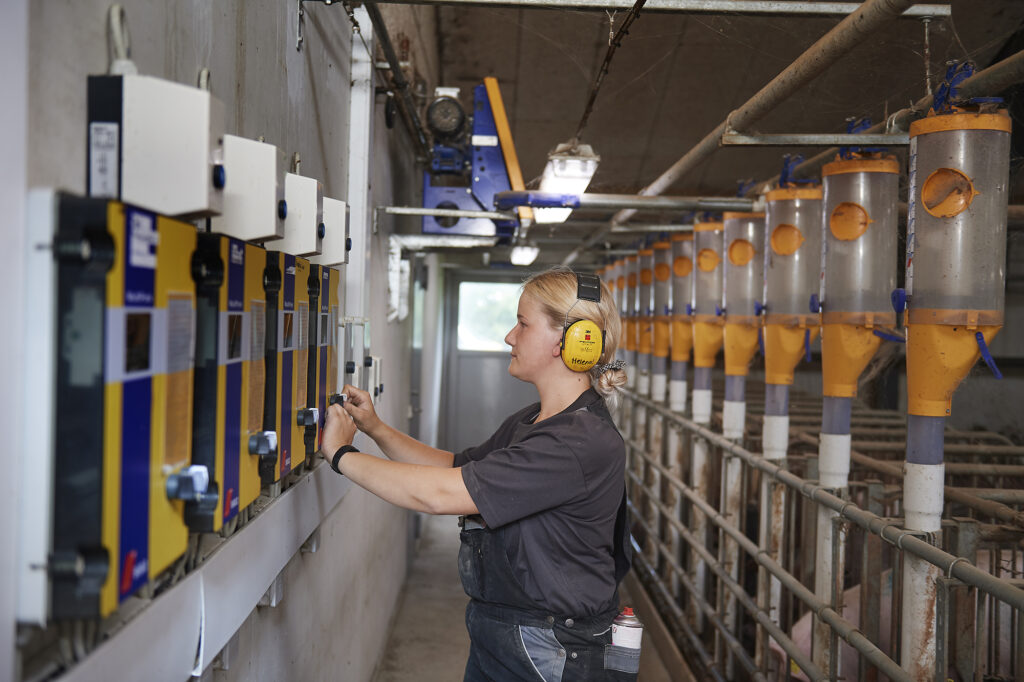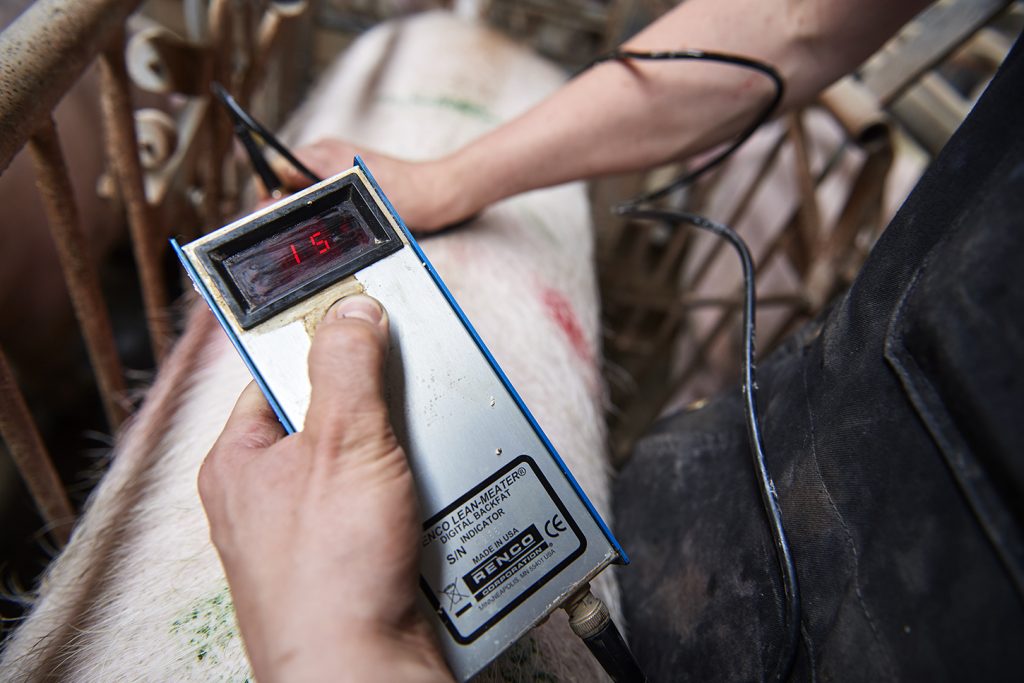Feeding from weaning until service
The weaning-to-service interval is a short but important period for the productivity of the sow. Supervising the factors that have an influence on the wean-to-service length, including feeding has shown to be highly correlated to success in the farrowing unit and subsequent lifetime reproductive productivity.
Production targets
- A wean-to-service interval of 6 days or less for 90 % of the sows
- Ensure the sows show a strong heat
- Secure a successful mating
Body condition & Weight
The focus in the wean-to-service period is to return the sow to optimal rebreeding condition. Maintaining a high feed intake is imperative for initiating the recovery of any lost body condition. It is important to focus on the condition of the individual sows.
At the time of mating, an average body condition with a backfat thickness of 12-14 mm is ideal.

* Backfat target at weaning/mating when measured at the point P2
|
|
|
Correct body condition is essential. Results have shown, that reaching the average body condition will have a direct impact on litter performance and sow longevity.
| Impact of body condition on reproduction | ||||||
|---|---|---|---|---|---|---|
| Body score condition | Skinny | Average | ||||
| Parity | 1-2 | 3-5 | > 6 | 1-2 | 3-5 | > 6 |
| Sows with shoulder wounds, % | 10 | 9,2 | 9,1 | 4,0 | 3,6 | 4,0 |
| Stillborn/farrowing | 1,3 | 2,9 | 2,4 | 1,2 | 1,7 | 1,9 |
Nutrient requirements
The basic nutritional requirements for DanBred sows are described below. The requirements are based on production in a temperate zone, adaption for the relevant climate may be necessary.
| Energy, per kg feed | |
|---|---|
| MJ ME/kg feed | 12,5 |
| MJ NE/kg feed | 9,5 |
| Danish Feed Units (FU) sow/kg | 1,02 |
| *Relations between MJ ME/MJ NE are depending on feed ingredients | |
| Basic nutrients, digestible per kg | |
| SID protein. min. g/kg | 105 |
| Lysine, SID g/kg | 6,0 |
| Digestible phosphorus g/kg | 2,3 |
| Calcium, g/kg | 7,1 |
Mineral and vitamin supply should be adequate to ensure normal bone development and general health. Soluble, as well as insoluble fibres, should be added to maintain gut health.
The full nutrient tables can be found here.
Feeding strategy
By maximising feed and nutrient intake in the short period from weaning until mating, have shown to markedly increase the number and quality of eggs released, hence optimising litter size.
The effect is explained by an increase in blood glucose which initiates higher insulin and IGF-1 production, initiating an increase of blood plasma oestradiol which stimulates the production of eggs. Moreover, the increased energy and protein stimulates the follicle stimulating hormone (FSH) responsible for early follicle maturation, and the level of luteinizing hormone (plasma LH), which contributes to the final follicle development and thus to increased ovulation rate.
The feed allowance during wean to service should be set to 4.5 to 5.0 kg per day.
The sows should be fed at least twice a day to obtain several peaks in insulin. An ad libitum or close to ad libitum feeding is not recommended, and if used, it will result in lower peaks in blood sugar and hence insulin peaks.

Be aware that old feed can interrupt optimal feed and water intake with the sows, why, it is imperative to keep close attention and ensure that all sows eat their full ration at each feeding.
When the sows show heat the feed allowance can be reduced to 3.5 kg per day and following service, the sows should convert into the feeding scheme for gestating sows.


